-
 Bitcoin
Bitcoin $105,953.9980
3.06% -
 Ethereum
Ethereum $2,445.3292
6.68% -
 Tether USDt
Tether USDt $1.0006
-0.03% -
 XRP
XRP $2.1968
7.03% -
 BNB
BNB $643.2903
2.13% -
 Solana
Solana $144.2799
3.82% -
 USDC
USDC $1.0000
-0.03% -
 TRON
TRON $0.2739
0.49% -
 Dogecoin
Dogecoin $0.1642
4.47% -
 Cardano
Cardano $0.5834
5.49% -
 Hyperliquid
Hyperliquid $38.0741
2.80% -
 Sui
Sui $2.7741
7.56% -
 Chainlink
Chainlink $13.4107
11.26% -
 Bitcoin Cash
Bitcoin Cash $450.4828
-0.61% -
 UNUS SED LEO
UNUS SED LEO $9.1301
0.64% -
 Stellar
Stellar $0.2476
5.49% -
 Avalanche
Avalanche $18.0637
5.09% -
 Toncoin
Toncoin $2.9066
2.43% -
 Shiba Inu
Shiba Inu $0.0...01160
4.01% -
 Hedera
Hedera $0.1527
8.00% -
 Litecoin
Litecoin $84.6122
2.37% -
 Monero
Monero $317.6076
5.76% -
 Ethena USDe
Ethena USDe $1.0008
0.02% -
 Polkadot
Polkadot $3.4519
5.27% -
 Dai
Dai $1.0000
-0.03% -
 Bitget Token
Bitget Token $4.2835
5.62% -
 Uniswap
Uniswap $7.0443
9.78% -
 Pepe
Pepe $0.0...09964
7.41% -
 Pi
Pi $0.5391
4.64% -
 Aave
Aave $264.1743
11.26%
How to interpret that RSI remains above 70 for three consecutive days without falling back?
When RSI stays above 70 for 3 days in crypto, it signals strong bullish momentum but requires confirmation from volume, trend, and broader market context to avoid false reversal signals.
Jun 24, 2025 at 11:14 pm
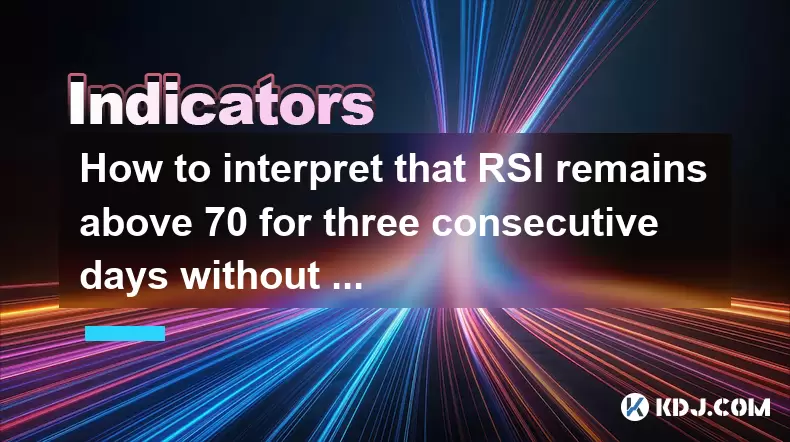
Understanding the RSI Indicator in Cryptocurrency Trading
The Relative Strength Index (RSI) is a momentum oscillator used to measure the speed and change of price movements. Typically, it ranges from 0 to 100 and is widely used by traders to identify overbought or oversold conditions in an asset. In cryptocurrency trading, where volatility is high and trends can reverse quickly, RSI plays a crucial role in technical analysis.
When the RSI remains above 70 for three consecutive days, this signals that the asset has been consistently overbought during this period. Normally, an RSI reading above 70 suggests that the asset may be overextended on the upside and could face downward pressure soon. However, if the RSI doesn't drop below 70 despite multiple sessions, it requires deeper interpretation.
Potential Implications of Sustained RSI Above 70
A prolonged RSI above 70 can indicate several possible market dynamics:
- The bullish momentum is strong and buyers are continuously entering the market.
- There may be ongoing positive sentiment or news driving consistent demand.
- The market might be in a parabolic phase, especially common in cryptocurrencies during bull runs.
In traditional markets, such readings often precede pullbacks. However, in crypto, due to its speculative nature and high volatility, assets can remain overbought for extended periods. Therefore, traders must not rely solely on RSI but also consider volume, candlestick patterns, and broader market context.
Distinguishing Between Healthy Bull Runs and Overheated Markets
It's essential to differentiate between a healthy continuation of a bullish trend and a potentially unsustainable rally:
- If price continues to make higher highs with increasing volume, the overbought RSI may reflect real strength rather than weakness.
- Conversely, if volume declines while RSI stays elevated, it could signal weakening participation and potential exhaustion.
Traders should also look at divergence between RSI and price action. For instance, if the price makes new highs but RSI fails to surpass its previous high, it could hint at a reversal even when RSI remains above 70.
How to Use RSI in Conjunction With Other Indicators
Using RSI in isolation can lead to misleading signals. Combining it with other tools enhances decision-making accuracy:
- Moving Averages: Overlaying moving averages like the 20-day or 50-day MA can help confirm trend strength.
- MACD (Moving Average Convergence Divergence): Helps assess whether momentum is still supporting the current trend.
- Volume Analysis: Rising volume supports continued uptrend; falling volume warns of potential reversal.
For example, if the MACD line remains above the signal line and the histogram is expanding while RSI is above 70, it strengthens the case for ongoing bullish momentum.
Practical Steps for Responding to Persistent Overbought RSI
Here’s how traders can approach a situation where RSI stays above 70 for three consecutive days:
- Monitor Price Action Closely: Look for signs of rejection at resistance levels or bearish candlestick patterns.
- Assess Market News and Events: Positive developments like exchange listings or partnerships can justify sustained overbought conditions.
- Set Trailing Stops: If already holding a long position, trailing stops can protect profits without prematurely exiting.
- Avoid Shorting Based on RSI Alone: Especially in crypto, shorting an overbought asset without confirmation can be risky.
- Use Timeframes Strategically: Check RSI across multiple timeframes (daily, 4-hour) to see if the condition holds uniformly or appears only in one.
This multi-step approach ensures traders don’t act impulsively and instead make calculated decisions based on broader context.
Common Misinterpretations and Pitfalls
Many traders fall into the trap of treating RSI as a standalone tool. Some common mistakes include:
- Assuming a Reversal Is Imminent Just Because RSI Is Overbought
- Ignoring Trend Direction and Applying RSI the Same Way in All Market Conditions
- Failing to Account for Bitcoin Dominance and Macro Influences
Especially in altcoin markets, if Bitcoin is rallying strongly, many altcoins will follow regardless of their individual RSI readings. Hence, understanding the broader ecosystem is key.
Frequently Asked Questions (FAQ)
Q: Can RSI stay above 70 for more than three days?
Yes, especially in strong uptrends or during market euphoria phases. This is particularly common in crypto bull markets where FOMO (fear of missing out) drives continuous buying pressure.
Q: Should I sell my holdings if RSI stays above 70 for three days?
Not necessarily. It depends on other indicators and your investment strategy. Some traders use RSI above 70 as a sign to hold or even add to positions if other signals support strength.
Q: Does RSI behave differently for different cryptocurrencies?
Yes. Larger-cap coins like Bitcoin and Ethereum tend to have more stable RSI behavior compared to smaller altcoins, which can show exaggerated RSI swings due to lower liquidity and higher volatility.
Q: How does timeframe affect RSI interpretation?
RSI values vary significantly across timeframes. A daily RSI above 70 might indicate strong bullish control, while a 1-hour RSI might show overextension within that larger trend. Always cross-check across timeframes before making decisions.
Disclaimer:info@kdj.com
The information provided is not trading advice. kdj.com does not assume any responsibility for any investments made based on the information provided in this article. Cryptocurrencies are highly volatile and it is highly recommended that you invest with caution after thorough research!
If you believe that the content used on this website infringes your copyright, please contact us immediately (info@kdj.com) and we will delete it promptly.
- BlockDAG: The Cryptocurrency ROI Revolution
- 2025-06-25 06:45:12
- Layer 1 Crypto Token Presales: What's Hot in the NYC Crypto Scene?
- 2025-06-25 06:30:12
- Ethereum, Investors, and Memecoins: A Wild Ride on the Crypto Coaster
- 2025-06-25 06:30:12
- SEI Price Explodes: Is This Just the Beginning?
- 2025-06-25 07:05:13
- Meme Coins Mania: Arctic Pablo and the Hunt for Presale Gains
- 2025-06-25 06:50:13
- Mark Cuban, Meme Coins, and Scams: A Cautionary Tale
- 2025-06-25 07:05:13
Related knowledge
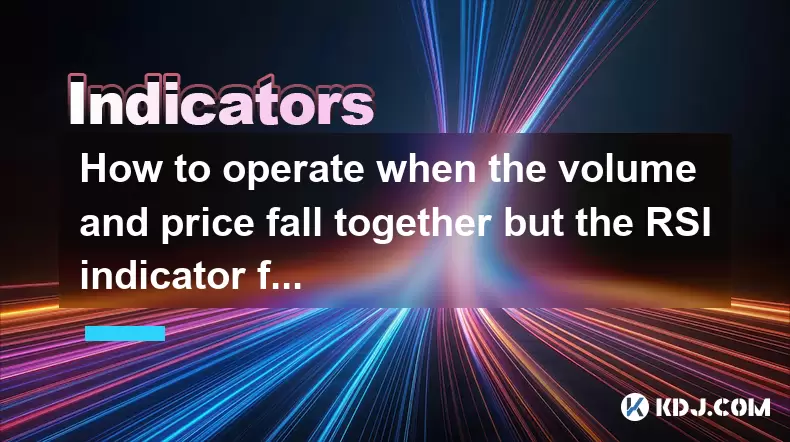
How to operate when the volume and price fall together but the RSI indicator forms a bottom divergence?
Jun 25,2025 at 04:29am
Understanding the Concept of RSI Bottom DivergenceWhen analyzing cryptocurrency price charts, traders often rely on technical indicators to spot potential reversals. One such signal is a bottom divergence in the Relative Strength Index (RSI). This occurs when the price makes a new low, but the RSI does not confirm that low and instead forms a higher low...
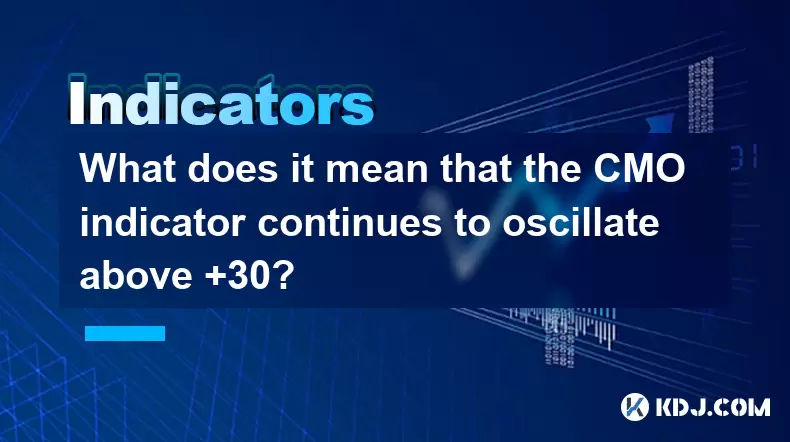
What does it mean that the CMO indicator continues to oscillate above +30?
Jun 25,2025 at 03:29am
Understanding the CMO IndicatorThe Chande Momentum Oscillator (CMO) is a technical analysis tool developed by Tushar Chande to measure momentum in financial markets. In cryptocurrency trading, the CMO helps traders identify overbought or oversold conditions and potential trend reversals. The oscillator ranges from -100 to +100, with values above zero in...

What does it mean that the ATR indicator suddenly doubles after hitting a new low this year?
Jun 24,2025 at 11:57pm
Understanding the ATR IndicatorThe Average True Range (ATR) is a technical analysis indicator used to measure market volatility. Developed by J. Welles Wilder, ATR calculates the average price range between a security’s high and low over a specific period—typically 14 periods. It does not indicate the direction of price movement but rather how volatile ...
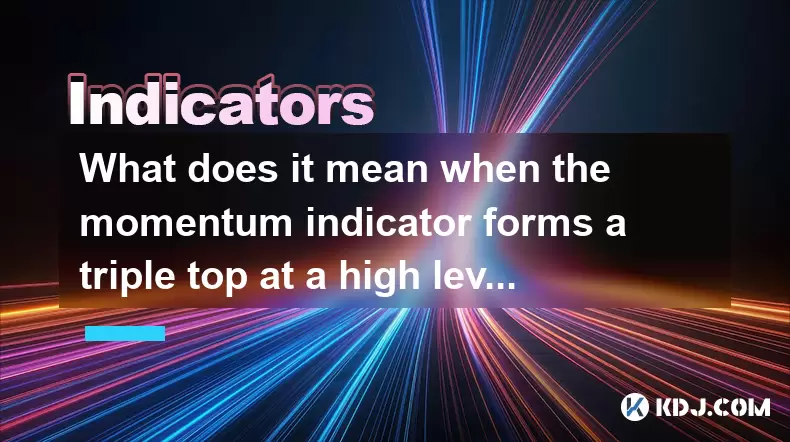
What does it mean when the momentum indicator forms a triple top at a high level?
Jun 25,2025 at 03:15am
Understanding the Momentum Indicator in Cryptocurrency TradingThe momentum indicator is a widely used technical analysis tool that measures the rate of change in price movements over a specified period. In cryptocurrency trading, where volatility is high and trends can reverse rapidly, this indicator helps traders identify potential trend reversals or c...
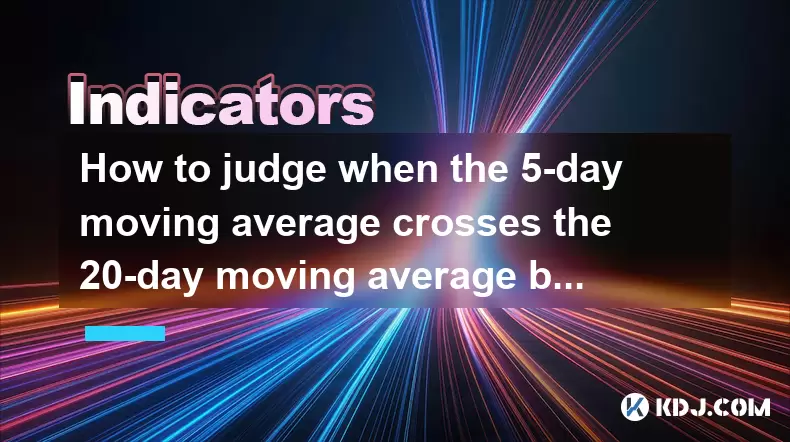
How to judge when the 5-day moving average crosses the 20-day moving average but the RSI shows a top divergence?
Jun 25,2025 at 06:28am
Understanding the Basics of Moving Averages and RSIIn technical analysis, moving averages are essential tools used to identify trends in price movements. The 5-day moving average (MA) is a short-term indicator that reflects recent price action, while the 20-day MA offers a broader perspective over a longer period. When these two lines intersect, it's kn...

What does the divergence between the volatility indicator and the price indicate?
Jun 25,2025 at 06:07am
Understanding the Volatility IndicatorThe volatility indicator is a technical analysis tool used to measure the rate and magnitude of price movements in financial markets, including cryptocurrencies. It helps traders assess whether a market is experiencing high or low volatility, which can influence trading decisions. Common types of volatility indicato...

How to operate when the volume and price fall together but the RSI indicator forms a bottom divergence?
Jun 25,2025 at 04:29am
Understanding the Concept of RSI Bottom DivergenceWhen analyzing cryptocurrency price charts, traders often rely on technical indicators to spot potential reversals. One such signal is a bottom divergence in the Relative Strength Index (RSI). This occurs when the price makes a new low, but the RSI does not confirm that low and instead forms a higher low...

What does it mean that the CMO indicator continues to oscillate above +30?
Jun 25,2025 at 03:29am
Understanding the CMO IndicatorThe Chande Momentum Oscillator (CMO) is a technical analysis tool developed by Tushar Chande to measure momentum in financial markets. In cryptocurrency trading, the CMO helps traders identify overbought or oversold conditions and potential trend reversals. The oscillator ranges from -100 to +100, with values above zero in...

What does it mean that the ATR indicator suddenly doubles after hitting a new low this year?
Jun 24,2025 at 11:57pm
Understanding the ATR IndicatorThe Average True Range (ATR) is a technical analysis indicator used to measure market volatility. Developed by J. Welles Wilder, ATR calculates the average price range between a security’s high and low over a specific period—typically 14 periods. It does not indicate the direction of price movement but rather how volatile ...

What does it mean when the momentum indicator forms a triple top at a high level?
Jun 25,2025 at 03:15am
Understanding the Momentum Indicator in Cryptocurrency TradingThe momentum indicator is a widely used technical analysis tool that measures the rate of change in price movements over a specified period. In cryptocurrency trading, where volatility is high and trends can reverse rapidly, this indicator helps traders identify potential trend reversals or c...

How to judge when the 5-day moving average crosses the 20-day moving average but the RSI shows a top divergence?
Jun 25,2025 at 06:28am
Understanding the Basics of Moving Averages and RSIIn technical analysis, moving averages are essential tools used to identify trends in price movements. The 5-day moving average (MA) is a short-term indicator that reflects recent price action, while the 20-day MA offers a broader perspective over a longer period. When these two lines intersect, it's kn...

What does the divergence between the volatility indicator and the price indicate?
Jun 25,2025 at 06:07am
Understanding the Volatility IndicatorThe volatility indicator is a technical analysis tool used to measure the rate and magnitude of price movements in financial markets, including cryptocurrencies. It helps traders assess whether a market is experiencing high or low volatility, which can influence trading decisions. Common types of volatility indicato...
See all articles
























































































